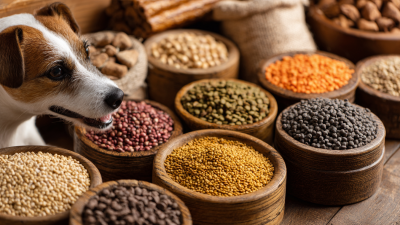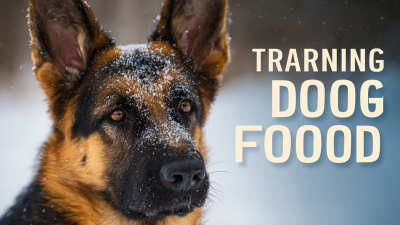Lately, the pet food world has been going through quite a few changes, especially when it comes to prices. If you look at a report from Grand View Research, they mentioned that back in 2020, the worldwide pet food market was worth over $100 billion. And get this – it’s expected to keep growing at around 4.5% each year from 2021 to 2028. That kind of growth makes things a little tricky for shoppers trying to figure out where to spend their money, with so many options out there.

One company worth mentioning is Shandong Luscious Pet Food Co., Ltd., based in China. They make all sorts of high-quality stuff — from dog and cat food to chicken jerky. If you’re trying to get a grip on why pet food prices vary so much, it’s good to keep in mind things like where ingredients come from, how much it costs to produce, and what people are willing to buy. All this info helps pet owners make smarter choices and make sure their furry friends are getting the best nutrition out there.
Figuring out pet food prices can feel pretty overwhelming, especially if you're a savvy shopper these days. As more and more folks are spending on their pets, it's actually pretty important to understand what’s driving those prices up or down. Stuff like the cost of raw ingredients, distribution, and other things really add up when it comes to what you see on the shelf.
If you're trying to get the best bang for your buck, a good place to start is by getting familiar with different brands and how their pricing works. Those premium brands you see everywhere tend to be pricier because of flashy marketing and where they source their ingredients, but don’t automatically assume they’re better quality. Take a minute to compare ingredient lists and nutritional info so you can find the best value for your pets, without spending a fortune.
Oh, and don’t forget about the type of food—dry, wet, or semi-moist. That can really influence the price too. Treats and chews might seem like easy options, but they can add up quick. Keep an eye out for discounts if you buy in bulk, or check if stores have loyalty programs—these little things can save you some serious cash in the long run.
You know, when it comes to pet food prices these days, things have gotten pretty complicated. There are so many factors at play, especially the ingredients that go into the formulas. I read somewhere, maybe from the Association for Pet Obesity Prevention, that over half of pet owners are actually willing to spend more for higher-quality ingredients. That just shows how much people care about transparency around where their pet’s food is coming from — it can really affect pricing strategies. For example, things like real meat or fish tend to cost more than cheaper fillers, mainly because folks see them as more nutritious and better for animal welfare.
It’s also interesting how much consumers base their choices not just on the ingredient quality but also on where those ingredients come from and how they’re processed. A study from the Pet Food Institute found that around 78% of pet owners pay attention to where ingredients originate when they’re shopping. Because of that, brands are now highlighting things like non-GMO, organic, and sustainably sourced ingredients in their marketing — which, of course, bumps up costs. Plus, with about 70% of pet owners checking labels before buying, it’s clear that shoppers are becoming more and more careful, really looking out for options that match their values while still giving their pets the nutrition they need.

 Figuring out the pet food aisle can be kinda overwhelming, right? There’s always that question of whether to go for the fancy, premium stuff or stick with something more budget-friendly. From what I’ve seen in recent studies, premium brands do tend to have better ingredients and formulas, but honestly, you can still get solid nutrition without breaking the bank. For example, one of the best inexpensive wet cat foods costs just about 36 cents per ounce, which is a lot less than the average of 59 cents. So, if you’re sharp about your shopping, you can find quality food that doesn’t drain your wallet.
Figuring out the pet food aisle can be kinda overwhelming, right? There’s always that question of whether to go for the fancy, premium stuff or stick with something more budget-friendly. From what I’ve seen in recent studies, premium brands do tend to have better ingredients and formulas, but honestly, you can still get solid nutrition without breaking the bank. For example, one of the best inexpensive wet cat foods costs just about 36 cents per ounce, which is a lot less than the average of 59 cents. So, if you’re sharp about your shopping, you can find quality food that doesn’t drain your wallet.
A quick tip—always peek at the ingredient list when comparing different pet foods. Make sure high-quality proteins are right up front—that way, you know your pet is getting what they need. Also, don’t forget about portion sizes. Sometimes the cheaper brands might require a bit more in terms of servings to meet your pet’s daily calorie needs, which could end up balancing out the savings.
And here’s some exciting news—by 2030, the pet food market’s expected to grow at about 7.3% annually, so more options are popping up all the time. That growth means even budget brands are likely to get better quality-wise. Oh, and keep an eye out for deals on subscriptions or buying in bulk—those can really add up and save you some serious cash in the long run!
When it comes to pet food pricing, there's definitely a lot at play—brand loyalty and marketing, for starters. You know how sometimes people stick to a certain brand and are willing to pay a bit extra just to stick with what they trust? That’s no accident. Companies work hard to build that loyalty through clever marketing that emphasizes quality, nutrition, and ethically sourced ingredients. By creating a strong brand identity, they don't just attract new customers—they keep them coming back, turning casual buyers into loyal fans who are more likely to accept higher prices.
And honestly, the way pet food brands market themselves really shapes how people see the value of what they’re buying. As the industry grows—especially in newer markets—brands that stand out with fresh marketing and unique products can charge more. It’s all about staying flexible and understanding what pet owners care about these days—whether that’s health, ethics, or just peace of mind. Getting a handle on what really drives customer loyalty can give brands the upper hand in this competitive space, for sure.
Trying to make sense of pet food prices can be pretty overwhelming, especially these days when so many folks are shopping online more and more. Did you know that around 70% of pet owners buy their pet food at least once a week from the internet? That just goes to show how much we’re leaning on digital stores for our furry friends’ needs. Using online tools wisely can really help you keep an eye on price trends, compare deals, and find the best options out there. There are even some handy trend discovery apps that can alert you to those sneaky little price dips—so you can make smarter buying choices without all the stress.
And let’s not forget about the rise of pet food delivery services — I mean, how awesome is that? Just a few clicks, and your pet’s favorite food shows up at your door. Pair that with good price tracking apps, and it’s basically never been easier to get what you need without leaving the couch. Plus, there are social media apps aimed specifically at pet owners, where folks swap tips about nutrition, saving money, and all that good stuff. As shopping habits keep changing and tech continues to shake things up, it’s a smart move for pet parents to tap into these online resources. That way, you stay savvy on prices and still make sure your buddy’s getting top-quality nutrition.
This chart illustrates the average price trends of pet food over the past year. As observed, there is a gradual increase in price from the beginning of the year, peaking in July, followed by slight fluctuations and a gradual decline towards the end of the year.
When it comes to your dog's nutrition and health, choosing the right food is essential. Luscious LSNP-03 Air Drying Beef Dice Dog Food offers a range of benefits that can significantly enhance your furry friend's well-being. Crafted with high-quality beef and beef by-products, this dog food boasts a crude protein content of at least 24%, which supports muscle development and overall health. With a careful balance of crude fat (≥5%) and extremely low moisture (≤18%), it ensures that your dog receives the energy they need without unnecessary fillers.
Moreover, the LSNP-03 formula limits crude fiber to a maximum of 0.2% and ash content to 5%, helping to maintain optimal digestive health. This makes it an excellent choice for pet owners looking for a nutritional boost that doesn’t compromise on quality. The shelf life of 18 months also means that you can stock up without worrying about spoilage, ensuring your pet always has wholesome meals on hand. Designed for responsible pet owners, Luscious LSNP-03 Air Drying Beef Dice Dog Food combines quality ingredients with impressive nutrition that can keep your dog healthy and active for years to come.
: The pricing of pet food is influenced by various factors, particularly the quality and sourcing of ingredients used in the formulations. High-quality proteins like real meat or fish often command higher prices than lower-quality fillers.
Yes, over 50% of pet owners express a willingness to pay a premium for high-quality ingredients, indicating that ingredient quality can significantly affect their purchasing decisions.
Ingredient origins and processing play a crucial role in shaping consumer perceptions. A significant portion of pet owners consider the sourcing of ingredients, with many opting for non-GMO, organic, and sustainably sourced components.
While premium brands often boast superior ingredients and formulations, budget options can still provide essential nutrition at a much lower cost, making them a viable choice for pet owners.
Consumers should check ingredient lists when comparing pet foods, ensuring that high-quality proteins are among the first few ingredients. This indicates that the food contains the necessary nutrition for pets.
Pet owners should be aware that budget foods may require larger portion sizes to meet daily caloric needs, which can offset the cost savings associated with lower-priced options.
The pet food market is projected to grow at a CAGR of 7.3% by 2030, indicating that there will likely be more options and improvements in quality for all price ranges.
Pet owners can enhance savings by looking for deals on subscriptions or bulk purchases, as these options can provide discounts and lower overall costs.
Figuring out the ins and outs of pet food pricing can be a bit tricky, but it’s pretty important if you want to get good quality food without breaking the bank. There are lots of things that affect the costs—stuff like the ingredients used, whether you stick with a familiar brand, and even marketing tactics. Usually, premium ingredients come with a higher price tag, but honestly, a lot of pet owners are okay with that—they believe it’s worth paying more for better nutrition. When you compare fancy, high-end pet foods to more budget-friendly options, you’ll notice that the cheaper ones often miss out on some key nutrients that your pet needs.
Plus, brand loyalty is a big factor—companies with a solid reputation tend to charge more, and some people just stick with what they know because they trust the brand. If you want to get the best deal, it’s a good idea to hop online and check out pricing trends and deals. This way, you’re more likely to make smart choices for your pet’s health without overspending. By understanding how all these things work together, you can confidently navigate the pet food world, making choices that benefit both your pet’s well-being and your wallet.













